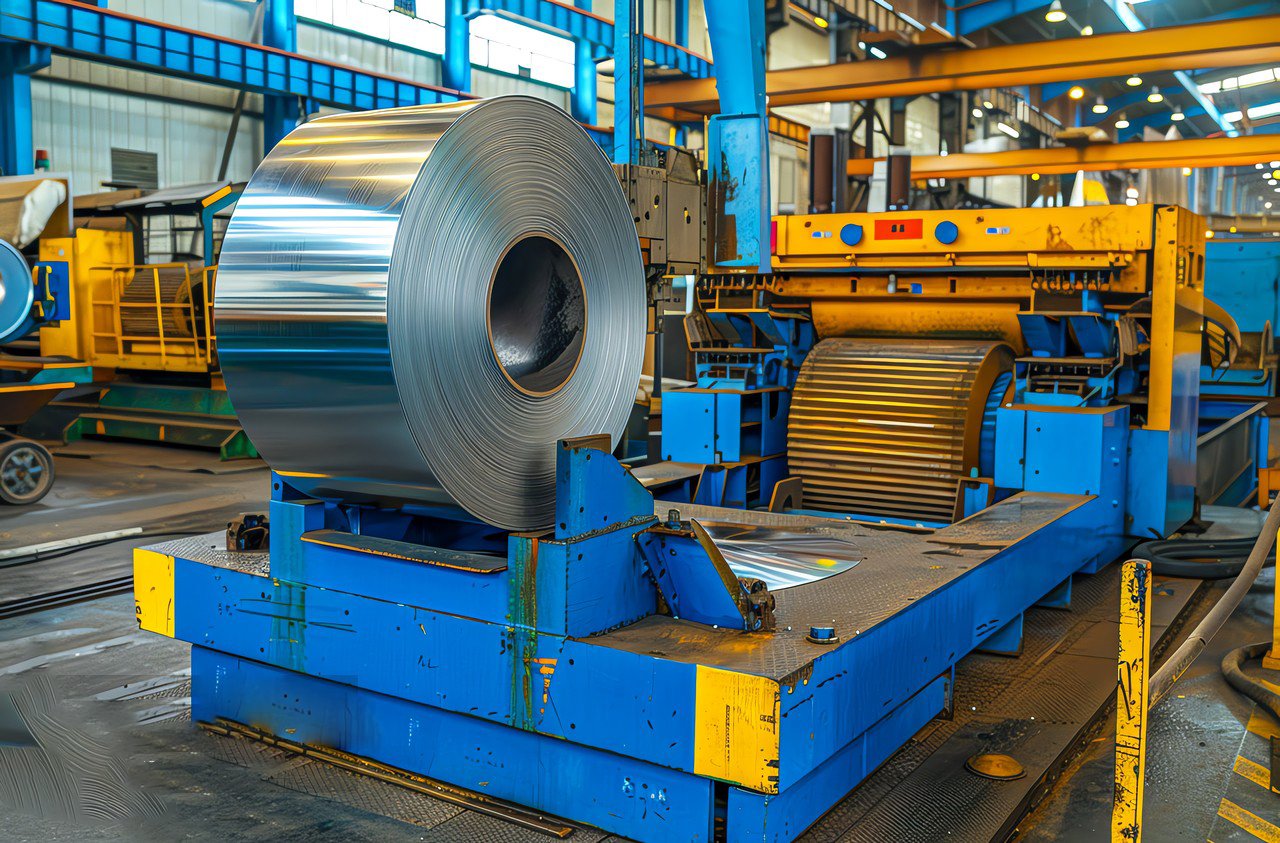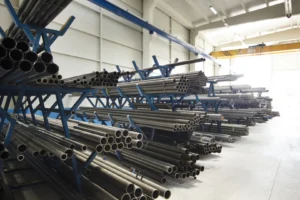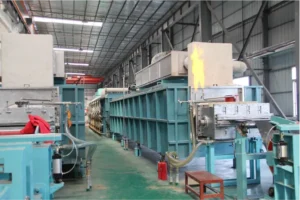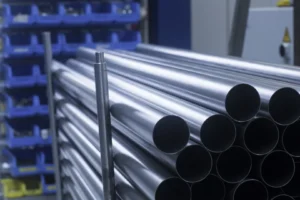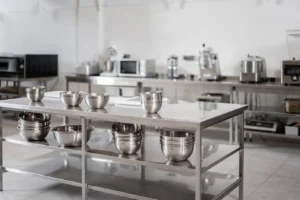2B Stainless Coil Finish: Specs, Uses, QA Tips
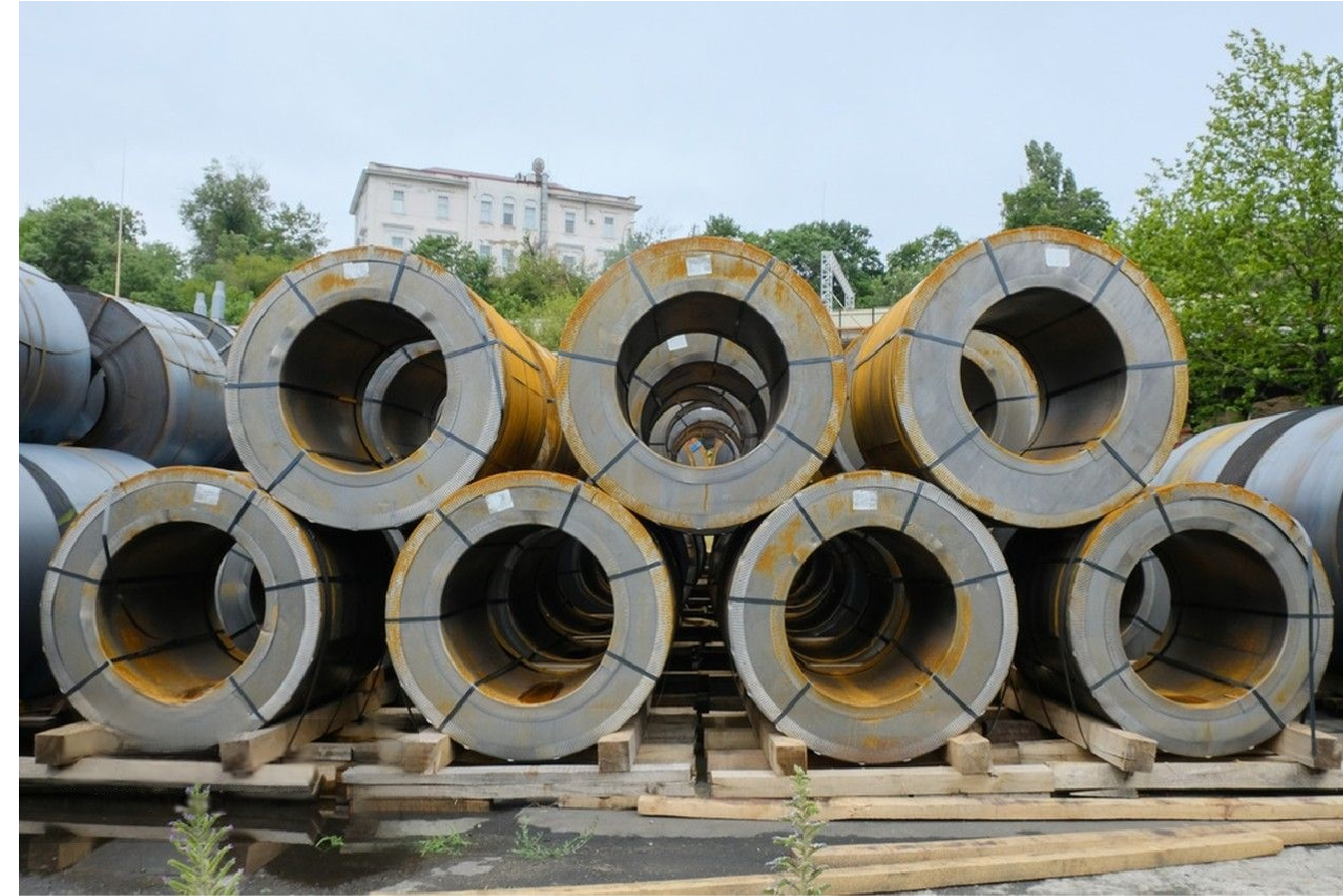
Struggling to navigate the specifics of the 2B stainless steel finish, or unsure if it's the optimal choice for your project? Choosing incorrectly or failing quality control can lead to costly rework and delays. This guide demystifies the 2B finish, detailing its specifications, common applications, and essential QA tips.
The 2B stainless coil finish is a widely adopted, general-purpose cold-rolled finish characterized by its smooth, moderately reflective surface. Achieved through annealing, pickling, and a light skin pass, it offers good formability and corrosion resistance, making it suitable for numerous diverse industrial applications.
Navigating the world of stainless steel finishes can indeed feel complex, given the array of options. However, a solid understanding of the 2B finish is fundamental for many industries. As Global Business Director at MFY, I've consistently seen how critical this knowledge is. Let's explore what makes the 2B finish a cornerstone and how you can master its application for optimal results.
The 2B finish is more than just another option; it's often the foundational choice1 for a vast spectrum of stainless steel products. Its renowned versatility arises from a well-balanced combination of aesthetic appeal, reliable corrosion resistance, and excellent formability. At MFY, we frequently guide our clients, from large-scale manufacturing plants in India to specialized equipment integrators in Southeast Asia, in determining if 2B is their most advantageous selection. For example, in the automotive sector, 2B's smooth surface is ideal for components that will undergo further polishing or painting, while in food processing, its cleanability and resistance to food acids are paramount.
What is the background and importance of the 2B stainless coil finish in the industry?
Ever wondered why the 2B finish is so prevalent in the stainless steel world? Its widespread use isn't accidental, but many overlook its historical development and fundamental role. Misunderstanding its importance can lead to underutilizing its benefits or choosing less suitable, more expensive alternatives. Let's explore its origins and enduring significance.
The 2B stainless steel finish, a bright, cold-rolled surface, gained prominence due to its cost-effectiveness, good corrosion resistance, and smoothness suitable for diverse applications. Its importance lies in being a versatile, foundational finish for numerous industries, from manufacturing to construction, forming a reliable standard.
The journey of the 2B finish is deeply intertwined with the evolution of stainless steel itself. When stainless steel first emerged, the industry needed a standard, reliable, and economical finish that could serve a multitude of purposes. The development of cold-rolling techniques paved the way for finishes like 2B. At MFY, we've witnessed how this finish has consistently met the demands of our clients, whether they are constructing large-scale infrastructure in the Middle East or manufacturing precision components for machinery. It’s more than just a surface; it's a testament to manufacturing efficiency and material science. I recall a client in Russia, an engineering contractor involved in manufacturing commercial kitchen equipment; they initially considered a more specialized finish. However, after discussing their fabrication processes and end-use requirements, the 2B finish proved to be the most practical and cost-effective solution, offering the necessary hygiene standards and formability. This particular client, a medium-sized enterprise, was looking to optimize material costs without compromising on the quality expected in professional kitchens. The 2B finish on 304 grade stainless steel provided that perfect balance, allowing them to remain competitive. This understanding of its background helps appreciate its continued dominance. We’ll now delve deeper into the specific characteristics that cemented its place in the industry, looking at how its production process contributes to its widespread appeal and utility.
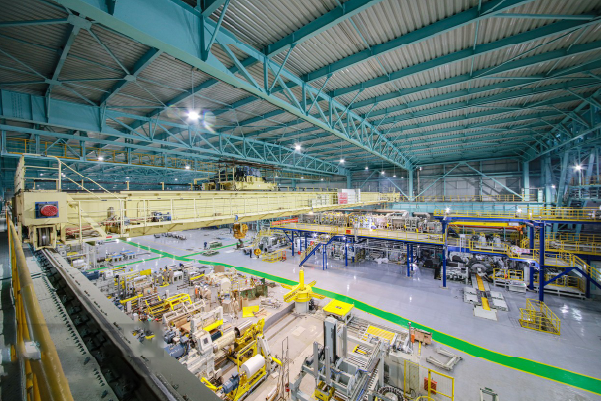
The Genesis of a Standard: How 2B Became Ubiquitous
The story of the 2B finish begins with the broader adoption of stainless steel in the early to mid-20th century. As industries recognized the superior corrosion resistance and durability of stainless steel, the demand for standardized, cost-effective finishes grew. Prior to the well-defined finishes we know today, surface treatments were often less consistent. The "2B" designation itself comes from the ASTM A480/A480M standard, which defines various finishes for flat-rolled stainless steel. The "2" indicates a cold-rolled product, and the "B" signifies a bright, smooth finish achieved through annealing, pickling, and a final light "skin pass" on polished rolls. This skin pass is crucial; it imparts the characteristic smoothness and moderate reflectivity that distinguishes 2B from a duller 2D finish, without the higher cost and reflectivity of brighter finishes like BA (Bright Annealed). For instance, a typical Ra (surface roughness) value for a 2B finish might range from 0.1 to 0.5 µm, whereas a 2D finish could be rougher.
The development of continuous cold-rolling mills was a game-changer. These mills allowed for greater control over the steel's thickness and surface quality, making finishes like 2B consistently achievable on a large scale. This consistency was vital for manufacturers who needed predictable material properties for their forming, welding, and finishing processes. I remember visiting a long-standing MFY client, a major appliance manufacturer in India producing washing machines and refrigerators. They shared how their automated production lines, processing hundreds of tons of our MFY 304 2B coils monthly, were originally designed around the predictable nature of this finish. Any significant deviation in surface quality or formability could disrupt their entire workflow, leading to downtime and increased scrap rates, which for them could mean losses translating to thousands of dollars per incident. This reliance highlights how 2B became an industry backbone, not just for its aesthetic but for its process compatibility. Major steel industry reports often indicate that 2B accounts for over 60% of cold-rolled stainless steel shipments globally.
The economic aspect also played a significant role. Producing a 2B finish is generally more economical than more reflective or textured finishes. It doesn't require the specialized controlled atmosphere annealing of a BA finish (which can add 10-15% to the cost) or the extensive grinding and polishing of a No. 4 finish (which can add 20-30% or more). This cost-effectiveness, combined with its good all-around performance, made it accessible and attractive to a wide range of industries, from producing basic cookware to fabricating components for industrial machinery. For instance, many of our distributor clients in Southeast Asia, who service a multitude of smaller fabricators, stock MFY 304 and 430 grade 2B finished stainless steel coils and sheets in large quantities (often hundreds of tons per grade) precisely because it caters to the broadest segment of their customer base, demonstrating its widespread market acceptance and demand.
Versatility as a Key Driver: Why 2B Suits So Many
The importance of the 2B finish in the industry is largely due to its remarkable versatility. It strikes a balance between aesthetic appeal, functionality, and cost, making it a "go-to" option for countless applications. Its smooth surface is cleanable, which is critical in hygienic applications like food processing equipment, pharmaceutical manufacturing, and commercial kitchens. Many of our clients in the Middle East, particularly those involved in constructing new food and beverage facilities, specify 2B finish for its ease of maintenance and resistance to food-grade corrosives. We once supplied a large order of 50 tons of MFY 316L 2B sheets (1.5mm thickness) to a dairy processing plant in Saudi Arabia. The combination of 316L's enhanced corrosion resistance (due to molybdenum content) and 2B's smooth, cleanable surface was paramount for meeting stringent local hygiene standards (SFDA regulations) and ensuring product integrity.
Furthermore, the 2B surface is an excellent substrate for subsequent finishing operations. If a brighter, more reflective finish is required, 2B can be easily polished to a No. 3, No. 4, or even a mirror finish (No. 8). If a specific color or texture is needed, it can be painted, PVD coated, or embossed. This adaptability makes it a foundational material. For example, a construction contractor client in Dubai working on a facade project for a commercial tower might start with our MFY 316 2B stainless steel sheets and then have them bead-blasted and PVD coated in a bronze color for a desired aesthetic effect. This ability to be transformed reduces the need for mills to produce an overwhelming variety of initial finishes, streamlining the supply chain. Data from the International Stainless Steel Forum (ISSF) often shows that 2B finish constitutes a significant percentage, sometimes over 50-60%, of all cold-rolled stainless steel produced globally, underscoring its widespread use.
Another aspect of its versatility is its good formability. The skin pass rolling not only improves the surface brightness but also enhances the mechanical properties slightly, making it suitable for drawing, bending, and stamping operations without excessive "earing" or cracking. This is crucial for manufacturers producing complex shapes, such as automotive components (e.g., fuel tanks, exhaust system parts), appliance housings, or intricate parts for industrial equipment. At MFY, our stainless steel coils with a 2B finish, particularly in austenitic grades like 304, are consistently sought after by clients in the automotive supply chain for this very reason. A case in point involved an Indian automotive parts manufacturer who was experiencing a 5% rejection rate due to cracking issues with a different supplier's material during deep drawing operations for a complex bracket. Switching to our MFY 304 2B coils, which offered better Olsen cup values (a measure of ductility) and a consistent surface, resolved their production challenges, reducing rejections to below 0.5%.
The Economic and Supply Chain Imperative
The prevalence of the 2B finish is also deeply rooted in economic and supply chain efficiencies. For steel mills, producing 2B is a relatively straightforward and high-volume process compared to more specialized finishes. This translates to better availability and generally more stable pricing, which are critical factors for purchasing managers and project planners. As a company with a fully integrated supply chain, from raw material trading to cold-rolled processing, MFY benefits from the efficiencies of producing and stocking 2B finish stainless steel, allowing us to offer competitive pricing (often 5-10% more favorable on bulk orders compared to less integrated suppliers) and rapid delivery to our global clients. This is especially important for our distributor and trader clients who rely on a consistent supply of standard products to maintain their inventory levels.
The standardization of the 2B finish also simplifies inventory management for both producers and end-users. Instead of stocking numerous niche finishes, a distributor can hold a large inventory of 2B in various grades (e.g., 304, 316L, 430) and thicknesses (e.g., 0.5mm to 3.0mm), knowing it will meet the needs of a broad customer base. This reduces storage costs and minimizes the risk of obsolete stock. For instance, our warehousing operations are optimized to handle large volumes of 2B coils (up to 20 tons each) and sheets, ensuring we can meet urgent demands from clients in rapidly growing markets like Southeast Asia, often within a 2-3 week lead time for standard items. A study by a leading metals market research firm, CRU Group, highlighted that the shorter lead times associated with 2B finished stainless steel, compared to specialized finishes (which can have lead times 4-6 weeks longer), contribute significantly to its popularity in project-driven industries like construction and engineering.
Consider the following table illustrating the general characteristics and typical applications, which often makes 2B a default choice before more specialized needs dictate otherwise:
| Feature | 2B Finish Characteristic | Implication for Industry | Typical MFY Client Application Example |
|---|---|---|---|
| Surface | Smooth, moderately reflective, bright grey | Good general appearance, cleanable | Commercial kitchen equipment (Distributor in Middle East supplying hotels), basic appliance panels (Manufacturer in India producing 10,000+ units/month) |
| Formability | Good (e.g., Elongation >40% for 304) | Suitable for most drawing, bending, stamping operations | Automotive under-body components (Equipment Integrator in SE Asia for OEM supplier), simple pressings for enclosures |
| Cost | Economical (Base price for cold-rolled) | Cost-effective for a wide range of uses | General fabrication projects, ductwork (Engineering & Construction Contractor in Russia building a new factory) |
| Availability | High (Standard mill product) | Readily available, stable supply chain, short lead times | Stock material for distributors (Trader in SE Asia maintaining 200+ tons inventory) |
2B finish is cold-rolledTrue
The 2B designation in ASTM standards specifically indicates a cold-rolled product, which is a key characteristic of this finish.
2B requires polishingFalse
The 2B finish is achieved through annealing and skin passing, not polishing. It can serve as a substrate for polishing but doesn't require it.
What are the current specifications and standard uses of the 2B stainless coil finish?
Are you clear on the exact technical specifications that define a 2B finish? Knowing these details is crucial for ordering the right material. Ordering based on vague understanding can lead to receiving material that doesn't meet your project's aesthetic or functional requirements, causing delays. We'll outline key specs and common uses.
The 2B stainless coil finish is defined by ASTM A480/A480M as a smooth, moderately reflective cold-rolled finish. It's produced by annealing and pickling, followed by a light skin pass on polished rolls. Standard uses include kitchenware, appliances, chemical equipment, and architectural components.
Understanding the "what" and "why" of the 2B finish is essential, but equally important is grasping its precise definition and where it truly shines. The term "2B" isn't just a casual descriptor; it corresponds to specific manufacturing processes and resulting surface characteristics recognized globally, such as those outlined in ASTM A480/A480M or EN 10088-22. At MFY, when we discuss 2B stainless steel coils with our clients—be it a large manufacturing company in India needing consistent material for their production line requiring thousands of tons annually, or an engineering contractor in the Middle East specifying for a new petrochemical plant component—we ensure clarity on these specifications. It's this precision that prevents costly errors and ensures the material performs as expected. I've seen projects, like a large order for architectural panels, stall because the wrong assumption about reflectivity was made, leading to a mismatch with existing structures due to a misunderstanding of these subtle but critical details. This section will delve into the specifics of what defines a 2B finish, including typical surface roughness values and reflectivity expectations, and then explore the breadth of its applications, drawing from our experiences across various sectors and illustrating with concrete examples from MFY's diverse client base.
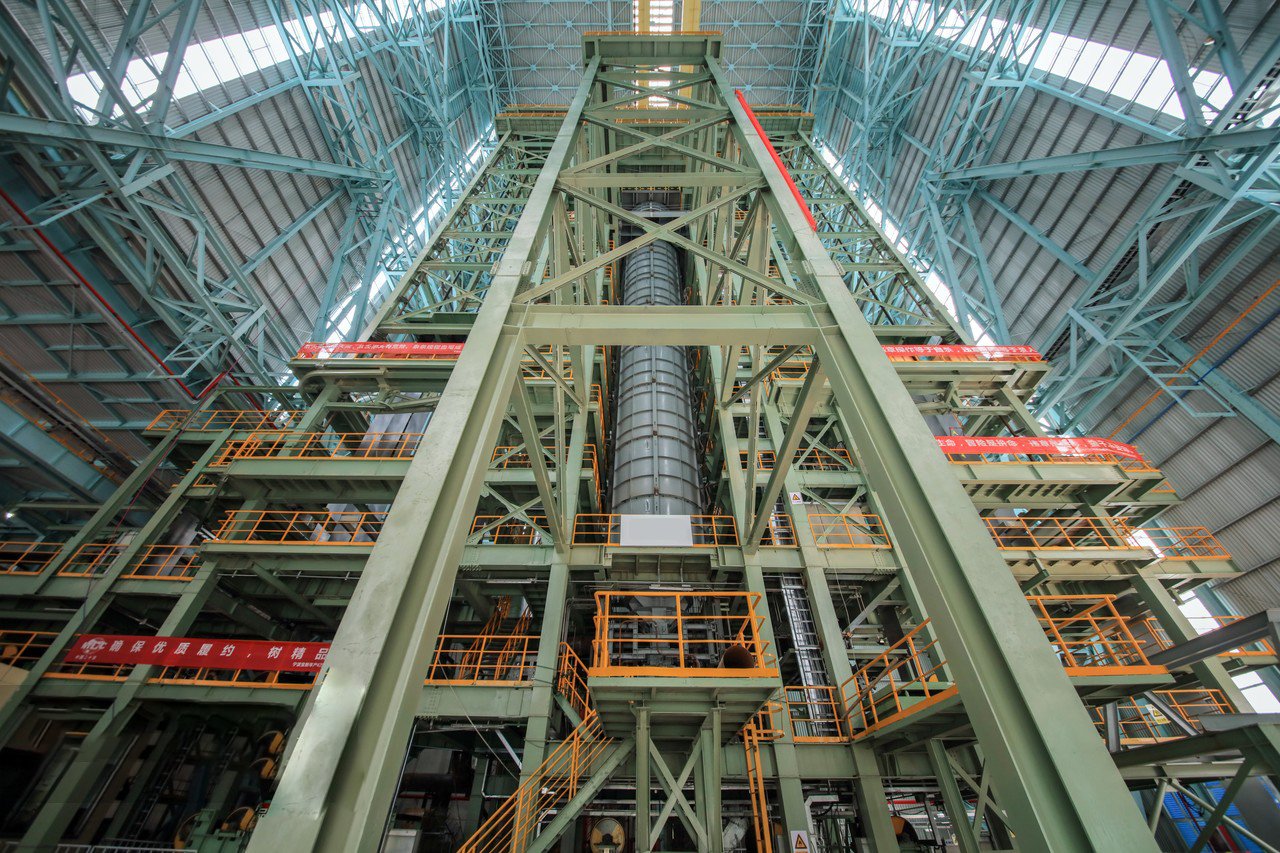
Decoding the Specs: What Defines a 2B Finish?
The 2B finish for stainless steel is primarily defined by international standards, most notably ASTM A480/A480M (Standard Specification for General Requirements for Flat-Rolled Stainless and Heat-Resisting Steel Plate, Sheet, and Strip) and its European counterpart EN 10088-2. These standards outline the manufacturing process: cold rolling to the desired thickness, followed by heat treatment (annealing, typically around 1050-1150°C for austenitic grades) to recrystallize the grain structure and restore ductility, then descaling (pickling, usually in a mixture of nitric and hydrofluoric acids) to remove the oxide layer formed during annealing. The crucial final step is a light "skin pass" or "pinch pass" (typically 0.5-1.5% reduction) using polished rolls. This skin pass imparts the characteristic smoothness and moderate reflectivity, typically resulting in a surface roughness (Ra) value ranging from 0.1 to 0.5 micrometers (µm). While specific Ra values are not always mandated by the general 2B definition and can be subject to agreement, this range is widely accepted in the industry.
The appearance is often described as a "bright, cold-rolled finish," smoother and more reflective than a 2D (dull, cold-rolled) finish, but less reflective than a BA (Bright Annealed) finish, which undergoes annealing in a controlled atmosphere to prevent oxidation. It's important to note that "2B" doesn't specify a particular gloss level (e.g., measured in GU - Gloss Units) or exact reflectivity reading; there can be slight variations between manufacturers and even between different production batches. This is why, at MFY, we emphasize clear communication. For instance, when supplying our MFY 304 2B stainless steel coils to an appliance manufacturer in Southeast Asia who has specific aesthetic requirements for visible parts like refrigerator doors, we ensure our production adheres to a consistent standard within the 2B range, sometimes providing samples for approval from a specific production lot to manage expectations and ensure the gloss level falls within an agreed internal range, say 100-200 GU at 60 degrees.
Beyond surface appearance, the specifications also indirectly relate to the material's mechanical properties. The annealing process ensures the steel is in its softest, most ductile state (e.g., for 304 grade, yield strength around 205 MPa, tensile strength around 515 MPa, and elongation >40%), making it suitable for forming. The light skin pass can slightly increase the yield strength (by up to 5-10%) and hardness, but its primary purpose is surface improvement and elimination of Lüders lines during forming. When clients like engineering contractors in Russia specify MFY 2B stainless steel for ductwork or tank fabrication, they are relying on this combination of good formability and a clean, corrosion-resistant surface. We always provide Mill Test Certificates (MTCs) with our shipments, detailing the chemical composition (e.g., Cr 18-20%, Ni 8-10.5% for 304), mechanical properties, and confirmation of the 2B finish, ensuring full traceability and compliance with standards like ASTM A240/A240M for common grades like 304, 316L, or 430.
A Spectrum of Applications: Where 2B Shines
The versatility of the 2B finish means it finds its way into an incredibly diverse range of standard uses. One of the most common areas is in the manufacture of kitchenware and appliances. From sinks (requiring good deep drawability), cookware, and cutlery to the internal components (shelves, liners) and external panels of refrigerators, ovens, and washing machines, 2B is a preferred choice. Its smooth surface is easy to clean, hygienic (less bacterial adhesion compared to rougher surfaces), and offers good corrosion resistance against food acids and detergents. I recall a major Indian cookware brand we supply with MFY 304 2B coils (0.6-0.8mm thickness); they value the consistent surface quality which allows for efficient deep drawing of pots and pans with minimal "orange peel" effect, and a final product that meets consumer expectations for durability and appearance across millions of units annually.
In the chemical and food processing industries, 2B stainless steel (often in grades like 304L or 316L for enhanced corrosion resistance) is extensively used for tanks, piping, vats, and processing equipment. The smoothness aids in preventing material buildup and facilitates thorough cleaning-in-place (CIP) procedures, crucial for maintaining product purity and preventing contamination. For instance, a client in the Middle East specializing in dairy processing equipment regularly orders MFY 316L 2B stainless steel sheets and pipes (typically 2-3mm wall thickness for tanks) for their fabrications, citing the finish's suitability for sanitary applications (meeting 3-A Sanitary Standards requirements) and its reliable performance in mildly corrosive environments containing lactic acid and cleaning solutions. Data from industry associations like Euro Inox often indicates that a significant portion of stainless steel used in food contact applications features a 2B finish as its base, valued for its balance of hygiene and cost.
Architectural and construction applications also frequently utilize 2B finish. While more decorative finishes (like No.4 or BA) might be used for prominent exterior facades, 2B is common for functional elements like roofing, flashing, rainwater goods (gutters, downpipes), interior paneling, elevator doors, and frames. Its cost-effectiveness and durability (lifespan often exceeding 50 years in many environments) make it a practical choice. An engineering and construction contractor client in Russia used our MFY 430 2B stainless steel sheets for interior fittings and kick plates in a commercial building project, where its magnetic properties were also a benefit for certain fixtures, alongside its clean look and ease of maintenance. The choice of 430 grade with a 2B finish provided a cost-efficient solution (ferritic grades like 430 are generally 20-30% cheaper than austenitic 304) without compromising on the desired aesthetic for those specific internal, less corrosive environments.
Industrial Equipment and Beyond: The Workhorse Finish
Beyond these prominent sectors, the 2B finish is a workhorse in general industrial equipment and manufacturing. This includes components for machinery, automotive parts (especially non-visible or functional parts like exhaust components, brackets, or fuel tanks where formability and corrosion resistance are key), electrical enclosures (NEMA-rated boxes), and various fabricated items. Its good formability allows for complex shapes, and its inherent corrosion resistance reduces the need for protective coatings in many environments. We've supplied MFY 2B finished coils (e.g., grade 304, 1.0-2.0mm thick) to equipment integrators in Southeast Asia who manufacture conveyor systems and material handling equipment for food processing plants, where the durability and relatively low maintenance of the 2B surface are key advantages, ensuring compliance with hygiene standards.
The transportation sector, including railcars (for paneling and structural elements) and shipping containers (for specialized refrigerated units), also employs 2B stainless steel, benefiting from its strength-to-weight ratio and longevity. Furthermore, it serves as an excellent substrate for further processing. If a polished (e.g., No. 4, requiring removal of approx. 0.025-0.05mm of material), brushed, or embossed finish is required, starting with a 2B surface is common practice as it provides a smooth, defect-free base. This makes it a foundational material for many specialized finishing companies. For example, some of our distributor clients purchase MFY 2B coils and then process them further (polishing, slitting) to offer a wider range of finishes and sizes to their own local customers, effectively using 2B as a versatile intermediate product. This added value service can increase their margins by 10-20%.
Here's a table summarizing common uses linked to 2B's properties:
| Property Leveraged | Standard Uses | MFY Product Example & Target Client |
|---|---|---|
| Hygienic & Cleanable | Kitchenware, food processing equipment, hospital equipment (trays, carts) | MFY 304/316L 2B Coils/Sheets for Manufacturing companies (Food/Pharma sector) |
| Good Formability | Deep drawn parts (sinks, cookware), automotive components, appliance housings | MFY 304 2B Coils for Manufacturing companies (Automotive/Appliance OEMs) |
| Corrosion Resistance | Chemical tanks (mild environments), architectural (functional), piping systems | MFY 304/316L 2B Pipes/Sheets for Engineering & Construction Contractors (Process industry) |
| Cost-Effectiveness | General fabrication, structural components, internal parts | MFY 430/304 2B Coils/Sheets for Distributors and Traders (General engineering market) |
| Good Substrate for Polish | Items requiring subsequent No.4, BA, or mirror polishing | MFY 304 2B Coils for specialized polishing companies (via MFY Distributors) |
2B finish is cold-rolledTrue
The 2B finish is achieved through cold rolling followed by annealing and pickling, as specified in ASTM standards.
2B has exact gloss specificationsFalse
While 2B has a characteristic moderate reflectivity, the standards don't specify exact gloss levels, allowing for some variation between manufacturers.
What challenges do industries face when using 2B stainless coil finish?
Think the 2B finish is always straightforward? While versatile, it's not without its potential pitfalls that can trip up even experienced users. Overlooking these challenges can lead to surface imperfections, inconsistent appearance, or even material failure, impacting your project's quality and budget. Let's uncover common challenges.
Industries using 2B stainless coil finish often face challenges like surface consistency variations (brightness, reflectivity), susceptibility to scratches and handling damage, and ensuring uniform appearance across batches. Maintaining quality during fabrication, especially welding (discoloration, sensitization) and forming (stretcher strains), can also be problematic.
While the 2B finish is celebrated for its versatility and cost-effectiveness, it's crucial to approach its use with a clear understanding of potential hurdles. In my years at MFY, guiding clients across diverse markets from India to the Middle East, I've seen how easily minor oversights can escalate into significant issues, sometimes leading to rejection rates of 5-10% if not properly managed. It's not just about specifying "2B"; it's about anticipating how this finish will behave during your specific fabrication processes (like deep drawing or laser cutting) and in its end-use environment (e.g., exposure to coastal air or specific chemicals). For instance, a manufacturing client producing high-volume consumer goods, such as kitchen appliances, might struggle with maintaining aesthetic consistency across batches if sourcing from multiple, less controlled suppliers. Meanwhile, a construction contractor might face challenges with on-site handling damage to architectural panels, leading to costly replacements or repairs. Recognizing these potential pain points, like the subtle differences in reflectivity that become apparent under specific lighting, is the first step towards mitigating them effectively. This section will delve into the practical difficulties that can arise, from minute surface imperfections to larger scale fabrication woes, helping you navigate them more successfully and ensure your stainless steel projects meet the desired standards.
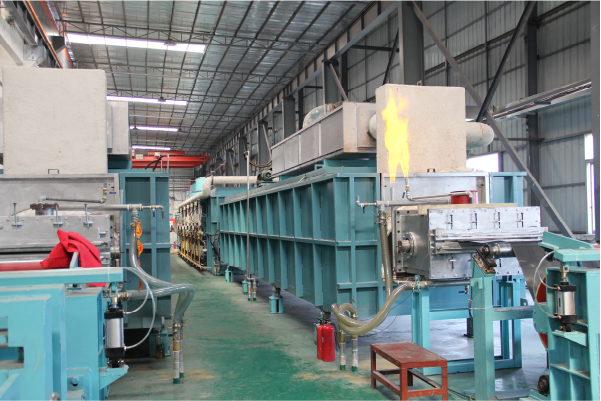
Navigating Surface Consistency and Aesthetic Expectations
One of the primary challenges with the 2B finish is managing surface consistency and aesthetic expectations. While standards like ASTM A480/A480M3 define the production method, they don't specify precise gloss units or exact visual appearance. This can lead to variations in brightness, reflectivity (often a diffuse reflection rather than mirror-like), and even slight color tones (sometimes a bluish or yellowish hue) between different batches or suppliers, or even within the same coil from end to end. For applications where aesthetics are critical, such as appliance panels, architectural features, or elevator interiors, these variations can be highly problematic. I recall a client, an equipment integrator in Southeast Asia manufacturing high-end laboratory furniture from MFY 316L 2B sheets. They initially faced issues with mismatched panel appearances when they had to supplement a large order with material from a different, emergency local source during a peak demand period. This forced them to implement stricter incoming material inspection using spectrophotometers to quantify color and gloss, and eventually consolidate their sourcing to a supplier like MFY who could guarantee a more consistent finish across deliveries, within an agreed Delta E color difference and gloss unit range.
This challenge is compounded by the subjective nature of visual assessment. What one inspector deems acceptable, another might reject based on subtle differences only visible under specific lighting angles. The "moderately reflective" nature of 2B means it can highlight fingerprints, smudges, and minor imperfections like "coil breaks" (transverse ripples) or "pinchers" (small, localized glossy spots from the skin pass) more readily than a duller finish, but less so than a highly polished one. This necessitates careful handling throughout the supply chain and fabrication process. Manufacturing companies, especially those with long and complex production lines (e.g., automotive assembly), often invest in protective films (typically 50-80 microns thick PE films) and specialized handling equipment (e.g., vacuum lifters with soft cups) to prevent scratches and blemishes that can mar the final product's appearance. According to a survey by a prominent metals industry journal, nearly 30% of fabricators reported "surface imperfections and consistency" as a recurring issue with standard stainless steel finishes like 2B, leading to average rework costs of 2-5% of material value.
Furthermore, the perceived quality of the 2B finish can be influenced by lighting conditions (e.g., fluorescent vs. LED vs. natural daylight) and viewing angles. A surface that looks perfectly uniform under diffuse factory lighting might reveal subtle inconsistencies or "waviness" (lack of flatness) when installed in an architectural application with directional natural or artificial light sources. This is why, for critical aesthetic applications, requesting samples from the specific coil or batch to be supplied and establishing clear visual acceptance criteria with the supplier beforehand is crucial. At MFY, we often provide reference samples (e.g., 30cm x 30cm) from specific production runs to ensure our clients, like distributors who supply to various end-users for architectural projects, have a clear benchmark for the 2B finish they will receive, sometimes even defining maximum allowable defect sizes per square meter.
Susceptibility to Handling Damage and Fabrication Issues
Despite its durability, the 2B stainless steel surface is susceptible to scratches, abrasions, and other forms of handling damage if not managed carefully. This is a significant challenge for industries from manufacturing to construction. The journey from the steel mill to the final installed product involves multiple handling stages: uncoiling, slitting, cutting, forming, welding, transporting, and installation. Each stage presents a risk of damage. For instance, dragging sheets across each other (metal-on-metal contact), using improper lifting clamps (e.g., alligator clamps without padding), or contact with carbon steel tools can all cause scratches or iron contamination, which can later lead to unsightly rust spots. I once worked with an engineering and construction contractor in Russia who experienced rust issues on a 2B stainless steel installation for a food processing facility. The root cause was traced back to using carbon steel grinding tools nearby during unrelated work; the airborne particles settled on the stainless surface, leading to contamination and subsequent localized corrosion, requiring costly on-site passivation of large surface areas.
Fabrication processes themselves can introduce challenges. Welding, for example, creates heat-affected zones (HAZs) that alter the surface appearance (creating heat tint/oxide scales) and can reduce corrosion resistance due to chromium carbide precipitation (sensitization) if not properly controlled and treated post-weld (e.g., through pickling and passivation). The smooth 2B surface will show weld discoloration (ranging from light straw to dark blue/black) and spatter quite clearly. Similarly, forming operations like bending or deep drawing can sometimes lead to issues like "orange peel" (a roughening of the surface in heavily deformed areas, especially with larger grain sizes) or stretcher strains4 (Lüders lines, visible as parallel bands) if the material properties are not perfectly matched to the process, or if tooling is not optimal. A manufacturing client in India producing deep-drawn sinks from MFY 304 2B coils (0.8mm) initially faced some orange peel issues on the corners. We worked with them to slightly adjust their lubrication (switching to a higher-viscosity, chlorinated paraffin-free lubricant) and die radii, which, combined with the consistent fine grain size (ASTM 7 or finer) of our coils, resolved the problem, improving their first-pass yield by over 8%.
Protective films are commonly applied to 2B finished coils and sheets to mitigate handling damage. However, even these present challenges. The type of adhesive (acrylic vs. rubber-based), the duration the film remains on the surface (prolonged storage can make removal difficult), and exposure to UV light or heat can affect how easily the film is removed and whether it leaves any adhesive residue. Removing stubborn film or residue can be time-consuming (adding man-hours) and risks damaging the underlying 2B surface if harsh abrasives or improper solvents are used. We often advise our clients, particularly distributors in hot climates like the Middle East who store material for extended periods, on best practices for protective film management, such as specifying UV-stabilized films and ensuring stock rotation (FIFO).
Ensuring Uniformity and Performance in Demanding Applications
While 2B is a general-purpose finish, achieving uniformity and consistent performance in more demanding applications can be a hurdle. For example, in applications requiring subsequent polishing to a higher grit finish (e.g., No. 4 or No. 8 mirror), any underlying inconsistencies in the 2B surface, such as variations in skin pass pressure or slight roll marks, can become more apparent after polishing. If the initial 2B finish has subtle variations in smoothness or contains microscopic imperfections, achieving a flawless mirror polish or even a consistent No. 4 architectural finish can be more difficult and costly, requiring more polishing time and consumables. This requires starting with a high-quality, very consistent 2B substrate, sometimes referred to as a "mirror-grade 2B" or "polish-ready 2B," which may command a slight premium.
Another challenge relates to the corrosion resistance in specific environments. While stainless steel itself is corrosion-resistant, the 2B surface, being smooth, is generally good. However, any surface contamination (e.g., chlorides, sulfides), embedded iron particles from tooling, or weld sensitization can compromise this resistance. Ensuring the "passive layer" – the thin (1-3 nanometers), invisible chromium oxide film that gives stainless steel its corrosion protection – is intact, uniform, and fully formed across the entire 2B surface is critical, especially in mildly corrosive or hygienic environments. This is why post-fabrication cleaning and passivation (e.g., using nitric acid solutions per ASTM A967) are often recommended, even for a 2B finish, particularly after welding or heavy forming, to remove any free iron and optimize the passive layer. Some industry studies, like those from NACE International, detail how improper handling or fabrication (e.g., using contaminated tools) can negate the inherent benefits of stainless steel finishes, leading to premature failures that could have been avoided with proper QA.
Finally, there's the challenge of matching 2B finishes from different sources or batches over time. For large projects or ongoing production, if material is sourced from multiple mills or at different times, slight variations in the 2B appearance (e.g., gloss, hue) can occur due to differences in rolling practices, roll polish, or annealing/pickling parameters. This can be critical for architectural projects where panels must match perfectly, or when assembling components from different production runs into a single unit. This often necessitates either single-sourcing for critical projects or establishing very tight master sample agreements.
| Challenge Category | Specific Issue | Potential Impact (Cost/Time/Quality) | MFY Client Scenario Example |
|---|---|---|---|
| Aesthetic Consistency | Batch-to-batch variation in brightness/reflectivity (e.g., ±20 GU) | Mismatched panels, customer rejection (up to 5% of goods) | Appliance manufacturer (India) needing uniform appearance for 100,000+ product lines. |
| Subjectivity in visual inspection | Disputes over quality, inconsistent product output | Distributor (SE Asia) managing quality for diverse end-users with varying expectations. | |
| Handling & Fabrication | Susceptibility to scratches, dings | Increased scrap (1-3%), rework costs, compromised aesthetics | Construction contractor (Middle East) damaging panels during on-site installation, adding days to schedule. |
| Weld discoloration, HAZ impact (sensitization) | Reduced corrosion resistance, poor visual at weld joints, potential failures | Equipment integrator (Russia) fabricating tanks requiring clean, strong welds for chemical storage. | |
| Forming issues (orange peel, stretcher strains) | Surface defects, production delays (requiring die rework) | Manufacturing company (India) deep drawing automotive components at high speeds. | |
| Performance & Uniformity | Inconsistent base for further polishing | Difficulty achieving No.4/No.8, increased polishing time (15-25%) | Client needing to polish 2B to No. 4 finish for architectural trim. |
| Maintaining passivation / corrosion resistance | Unexpected corrosion, reduced service life (e.g., by years) | Chemical processing equipment where hygiene and purity are critical for product safety. |
2B finish shows weld discolorationTrue
The smooth 2B surface clearly reveals heat tint and oxide scales from welding, requiring post-weld treatment.
2B finish has mirror-like reflectionFalse
2B finish produces diffuse reflection rather than mirror-like shine, with moderate reflectivity that varies between batches.
How can industries effectively address the quality assurance challenges of 2B stainless coil finish?
Facing inconsistent 2B finish quality or unexpected defects? These issues can derail projects and inflate costs if not properly managed. Without robust QA, you risk material waste, production inefficiencies, and delivering subpar products, harming your reputation and bottom line. Discover effective QA strategies.
Industries address 2B finish QA by implementing stringent supplier qualification, detailed incoming material inspection (visual standards, gloss meters), careful handling protocols with protective films, consistent in-process checks during fabrication (e.g., forming, welding), and thorough post-weld cleaning and passivation procedures.
Recognizing the potential pitfalls of the 2B stainless coil finish is the first step, but proactive quality assurance (QA) is where the real solutions lie, turning potential problems into manageable variables. At MFY, our commitment to delivering high-quality stainless steel products, including our widely used 2B finish coils and sheets (which constitute about 70% of our flat product sales), is underpinned by a robust QA framework certified to ISO 9001. This framework extends from raw material sourcing (verifying chemistry of input hot-rolled coils) to final dispatch inspection (checking surface, dimensions, and packaging). I've seen firsthand how a well-implemented QA system can transform a client's experience, turning potential frustrations into smooth, predictable outcomes. Whether it's ensuring aesthetic consistency within a 10 GU gloss range for an appliance manufacturer in India or guaranteeing material integrity (e.g., freedom from surface contaminants) for an engineering contractor in the Middle East building pharmaceutical cleanrooms, effective QA is non-negotiable. It’s about more than just catching defects; it’s about preventing them through process control and building confidence in the material. Let's explore the practical measures and best practices that industries can adopt to master the quality aspects of 2B stainless steel, minimizing rework and maximizing yield.

Establishing Robust Supplier Qualification and Incoming Inspection
The foundation of quality assurance for 2B stainless coil finish begins long before the material arrives at your facility: it starts with rigorous supplier qualification and clear purchasing specifications. Not all mills or suppliers produce 2B finish to the same consistency. It's vital to partner with reputable suppliers like MFY, who have a proven track record of quality, can provide comprehensive documentation, including Mill Test Certificates (MTCs) detailing chemical composition (e.g., C, Mn, P, S, Si, Cr, Ni, Mo, N levels to 0.001% precision), mechanical properties (yield strength, tensile strength, elongation, hardness), and adherence to finish standards (e.g., ASTM A480/A480M). When we onboard a new large-volume client, for instance, a distributor in Southeast Asia who will be supplying to multiple downstream industries and requires several hundred tons per month, we often go through a detailed qualification process. This might include audits of our production facilities (cold rolling mill, annealing and pickling line, skin pass mill), provision of extensive sample sets for their evaluation, and agreeing on specific surface quality parameters (e.g., maximum number of minor allowable defects per square meter). This builds a shared understanding of quality expectations, often formalized in a Quality Agreement.
Upon arrival, detailed incoming material inspection is critical. This should go beyond simply checking dimensions (thickness, width, coil ID/OD) and grade (verified by PMI - Positive Material Identification if necessary). For the 2B finish, visual inspection against agreed-upon reference samples or standards (e.g., physical samples showing acceptable range of brightness and defect types) is essential. Parameters to check include:
- Uniformity: Are there variations in brightness, color, or texture across the coil width and along its length? Check for issues like "center buckle" or "edge wave."
- Defects: Look for scratches, dents, roll marks ("chatter marks"), pits, rust spots, pickling stains, or any other surface imperfections. Standards like ASTM A923 can be used to detect detrimental intermetallic phases in duplex stainless steels if applicable, though less common for standard 2B.
- Protective Film: Is the film applied correctly (no bubbles or creases), intact, and of the specified type (e.g., laser-cuttable film)? Is there any sign of adhesive residue if a sample area is peeled? Film thickness (e.g., 60-80 microns) and adhesion strength should be consistent.
Using tools like gloss meters (e.g., at 60° or 85° angle) can provide a quantitative measure of reflectivity, helping to reduce subjectivity in visual assessments. Surface roughness testers (profilometers) can confirm Ra values. Documenting these inspections (e.g., with photos, measurements, and a clear accept/reject decision) is key. Maintaining records of supplier performance, including any non-conformances, helps in making informed future purchasing decisions and provides leverage for addressing quality issues. For critical applications, some companies even conduct small-scale fabrication tests (e.g., bend tests to check for cracking, Erichsen cupping tests for formability) on samples from new batches before committing the entire coil to production. This proactive approach, while adding a small initial effort (perhaps 1-2 hours per batch), can save significant costs (potentially thousands of dollars in scrap) down the line.
Implementing Careful Handling and In-Process Controls
Once the material is accepted, maintaining its quality throughout storage, handling, and fabrication is paramount. 2B stainless steel, especially with its protective film, requires careful management.
- Storage: Store coils and sheets in a clean, dry, and controlled environment (e.g., temperature 15-25°C, humidity <60%), preferably off the floor on pallets or in dedicated racking systems, to prevent contamination and damage. Avoid contact with carbon steel or other dissimilar metals to prevent galvanic corrosion or iron contamination – maintain a separation distance of at least 1-2 meters or use physical barriers.
- Handling: Use appropriate lifting equipment (e.g., spreader bars with synthetic slings for sheets, C-hooks or coil grabs with protective sleeves for coils, vacuum lifters with non-marking soft cups) to avoid dents and scratches. Train personnel on proper handling techniques, emphasizing the avoidance of dragging materials. Keep the protective film intact for as long as possible during processing, ideally removing it only at the final stage before inspection or dispatch. When we supply our MFY stainless steel pipes with a 2B equivalent finish (often a bright pickled finish for pipes), we advise clients on racking systems that prevent pipe-on-pipe abrasion and use individual sleeving for high-quality requirements.
- Segregation: Ensure complete segregation from carbon steel fabrication areas to prevent cross-contamination. Use dedicated tools (brushes, grinders, files, clamps, etc.) made of stainless steel or non-metallic materials. If shared tools are unavoidable, they must be thoroughly cleaned and any carbon steel residue removed before use on stainless steel. Color-coding tools for "stainless steel only" use is a common best practice.
In-process quality checks at various stages of fabrication are crucial.
- Cutting/Shearing/Slitting: Inspect edges for burrs (which can trap contaminants or cause injury) and ensure cuts are clean and straight. For laser cutting, optimize parameters to avoid excessive dross or heat tint. For slitting, ensure knives are sharp to prevent edge defects.
- Forming (Bending, Drawing, Stamping): Monitor for issues like orange peel, stretcher strains, galling, or cracking. Ensure tooling is clean, smooth, highly polished, and appropriate for stainless steel (e.g., hardened tool steels, possibly with PVD coatings like TiN or CrN, or bronze inserts). Proper lubrication (e.g., chlorinated paraffin-free, sulfur-free drawing compounds or synthetic lubricants) is key and should be completely removed afterwards.
- Welding: Use appropriate welding techniques for stainless steel (e.g., TIG, MIG, Laser). Control heat input (e.g., aim for interpass temperatures below 150°C for austenitic grades) to minimize distortion and sensitization. Use correct filler metals and shielding gases (e.g., pure Argon or Ar/He mixtures for TIG). Post-weld cleaning (removing slag and spatter using stainless steel brushes or specialized chemical cleaners) and treatment (pickling with acid pastes/gels and passivation with nitric acid solutions per ASTM A380/A967) are often necessary to restore corrosion resistance and surface appearance in the heat-affected zone (HAZ). We often work with engineering & construction contractors in the Middle East to provide guidance on best practices for welding our 316L 2B sheets for tank construction, ensuring weld procedures meet standards like ASME Section IX. Visual inspection of welds (per ISO 5817) and, if necessary, dye penetrant testing (PT) or radiographic testing (RT) can identify defects.
A well-documented quality plan that outlines these handling and in-process controls, along with regular internal audits (e.g., quarterly) and employee training (initial and refresher courses), reinforces the importance of these practices. Some studies, like one by the Nickel Institute, show that up to 40% of stainless steel corrosion issues are attributable to improper fabrication or post-fabrication treatment, highlighting the importance of these steps.
Final Inspection, Feedback Loops, and Continuous Improvement
Before the final product is shipped or installed, a thorough final inspection is necessary. This is the last chance to catch any defects or deviations from the specified 2B finish quality. This inspection should mirror the incoming inspection criteria but applied to the finished component or assembly. Pay special attention to areas that have undergone fabrication, such as welds (check for undercut, porosity, complete pickling), bends (check for cracking or excessive orange peel), and areas where protective film has been removed (check for residue or scratches). Confirm dimensional accuracy and overall workmanship.
Establishing feedback loops between different departments (purchasing, quality control, production, and even sales/customer service) is vital. If production encounters issues with a particular batch of 2B material (e.g., higher than usual cracking during forming), this information needs to be relayed quickly (e.g., through a non-conformance report system) to purchasing and QC so they can address it with the supplier and quarantine suspect material. Similarly, customer feedback, both positive and negative, regarding the finish quality should be systematically collected (e.g., through surveys, site visits, complaint logs) and analyzed (e.g., Pareto analysis of defect types). This data is invaluable for continuous improvement. At MFY, our global sales team, including myself, regularly gathers feedback from clients like equipment integrators in Russia or manufacturers in India, which feeds directly into our quality and production planning meetings, aiming for a year-on-year reduction in quality-related complaints.
Continuous improvement (Kaizen) should be an ongoing goal. This involves regularly reviewing QA procedures (e.g., annually or after significant issues), investing in training (e.g., on new ASTM standards or fabrication techniques), exploring new technologies or techniques for inspection and handling (e.g., automated visual inspection systems), and working collaboratively with suppliers to enhance material consistency. For example, some advanced fabricators use automated optical inspection systems to detect subtle surface flaws on 2B finished parts that might be missed by the human eye, especially in high-volume production, improving defect detection rates by over 99%. While this may not be feasible for all, the principle of continually seeking better ways to ensure quality applies universally. This could also involve statistical process control (SPC) to monitor key process variables in fabrication.
Here’s a table outlining key QA stages and actions:
| QA Stage | Key Actions | MFY's Approach/Client Benefit (e.g., Manufacturing Co.) |
|---|---|---|
| Supplier Management | Vet suppliers (ISO 9001 cert.), establish clear specs (e.g., internal std. for gloss), request MTCs, audit if necessary. | MFY provides full MTCs, maintains consistent production via SPC, benefiting clients with reliable, predictable supply. |
| Incoming Inspection | Visual check against standards/samples, gloss/Ra measurement, check for defects, film integrity, PMI. | Helps MFY clients ensure they receive material meeting their tight specs, reducing line stoppages. |
| Handling & Storage | Proper equipment, clean/dry storage, segregation from carbon steel, protective film management (FIFO). | MFY advises on handling, reducing client risk of damage and contamination, preserving material value. |
| In-Process Control | Monitor cutting, forming, welding; ensure proper tooling and techniques; implement post-weld treatment. | MFY’s consistent material (e.g., tight thickness tolerance ±0.02mm) aids fabricators in achieving stable process outcomes and higher yields. |
| Final Inspection | Check finished product against specs, especially fabricated areas (welds, bends). | Ensures end-products made from MFY steel meet final quality criteria, reducing field failures. |
| Feedback & Improvement | Internal (NCRs) and external (customer complaints) feedback loops, regular review of QA system, continuous training. | MFY uses client feedback to refine products and services, aiming for <0.5% defect rate. |
Supplier qualification prevents defectsTrue
Rigorous supplier qualification including facility audits and sample testing helps ensure consistent 2B finish quality from the source.
Carbon steel tools are acceptableFalse
Carbon steel tools must be avoided as they can cause iron contamination; dedicated stainless steel or non-metallic tools are required.
What are the advanced technical tips for ensuring optimal quality of 2B finishes?
Already mastering the basics of 2B finish QA but looking to elevate your quality to the next level? Standard practices might not always be enough for highly critical applications. Subtle inconsistencies or overlooked technical details can still compromise performance and aesthetics. Let's explore advanced tips.
Advanced tips for optimal 2B finish quality include specifying tighter tolerances for thickness and surface roughness (e.g., Ra <0.2 µm) with suppliers, utilizing advanced NDT (e.g., AOI) for defect detection, precise control of forming lubrication and tooling (e.g., coated dies), and meticulous, validated post-weld cleaning and passivation.
While standard quality assurance measures form the bedrock of managing 2B stainless steel finishes, certain applications and client expectations demand a more sophisticated approach, pushing beyond typical industry norms. As Global Business Director at MFY, I've engaged with numerous clients, from high-tech equipment integrators in Southeast Asia developing components for semiconductor manufacturing, to specialized manufacturers in India producing medical devices, who require not just good, but exceptional, 2B finish quality where defect rates are measured in parts per million (PPM). This often involves delving into the finer points of material science (like micro-cleanliness of the steel), process control (e.g., skin pass reduction to within 0.1%), and metrology (e.g., using atomic force microscopy for surface analysis in R&D)1. It’s about moving beyond visual checks and basic MTC data to a more data-driven, preventative, and deeply technical strategy. These advanced techniques aren't just for niche players; they represent best practices that can elevate any operation dealing with 2B stainless steel, ensuring enhanced performance, longevity, and superior aesthetic appeal, especially when the cost of failure is extremely high.
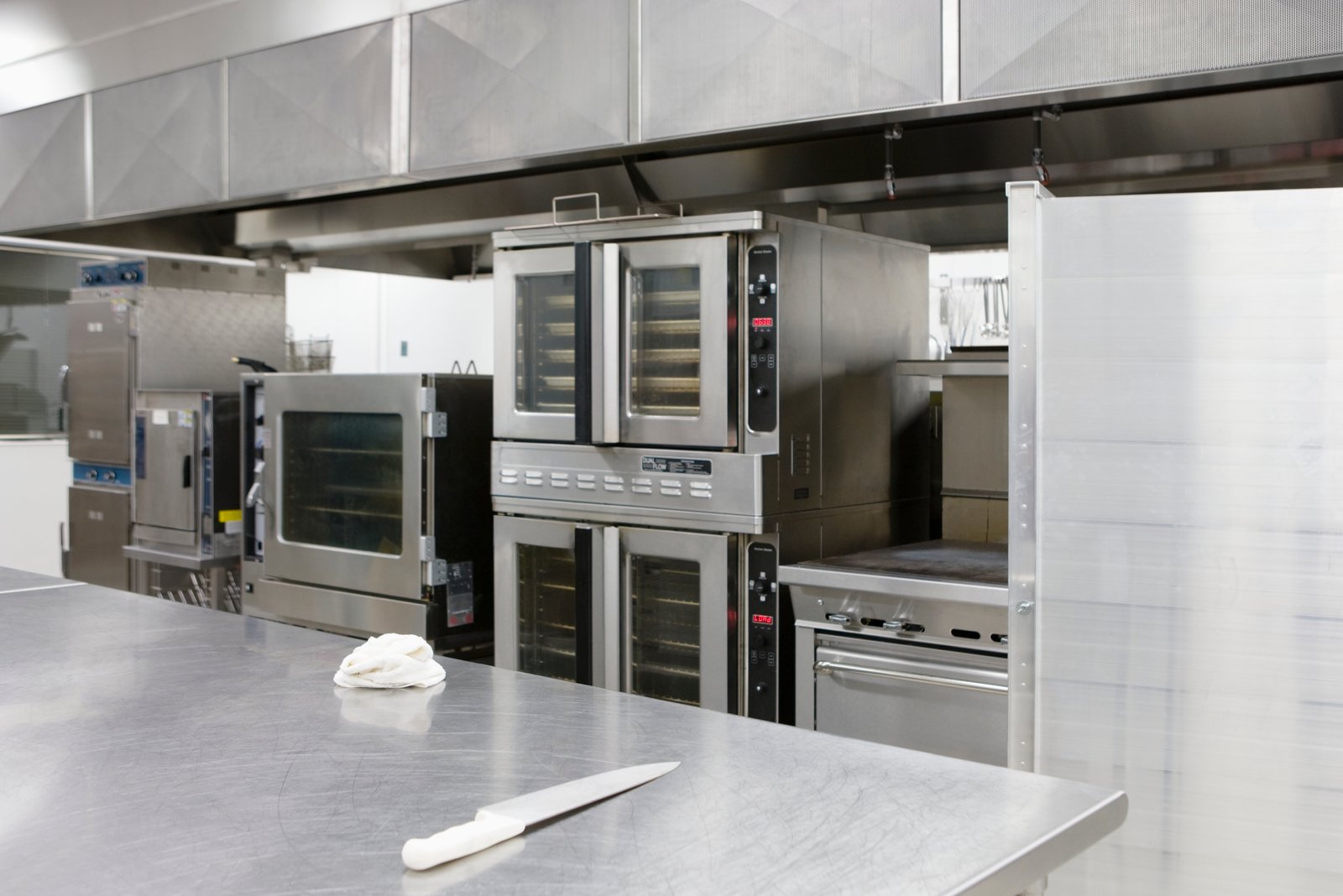
Precision in Procurement: Beyond Standard Specifications
Achieving optimal 2B quality often starts with more stringent procurement specifications than what basic standards like ASTM A480 might imply. While 2B defines a process, advanced users might negotiate tighter tolerances with their suppliers2. For instance, instead of relying on the general Ra (surface roughness) range of 0.1-0.5 µm, a specific maximum Ra value, say <0.25 µm or even <0.15 µm, could be agreed upon, particularly if the 2B surface is a precursor to electropolishing or high-gloss mechanical polishing. At MFY, for clients with such exacting needs, we can sometimes select coils from production runs known to have a finer, more consistent surface, potentially by using newly ground and polished skin pass rolls or by adjusting rolling pressures and speeds. This might involve discussing the "skin pass" rolling parameters (e.g., roll roughness, pressure, percentage reduction) with the mill or selecting material from specific mills known for superior consistency. A client in the medical device industry, for example, required an exceptionally smooth 2B finish on 316LVM (low carbon vacuum melt for higher purity and fewer inclusions) sheets for implantable device components; standard 2B wasn't quite enough, so a more detailed surface specification including maximum inclusion size (per ASTM E45) was developed.
Another advanced tip is to specify limitations on certain types of visual imperfections that might be permissible under standard 2B but are unacceptable for a high-end application. This could include very minor roll marks (e.g., no transverse marks > 5mm in length), coil breaks (none permissible), or slight color variations (e.g., within a specific Delta E value compared to a master sample when measured by a spectrophotometer)3. This requires a close partnership with the supplier and often involves creating detailed visual acceptance standards, perhaps with limit samples illustrating acceptable and unacceptable conditions, and potentially agreeing to a higher price point (e.g., 5-10% premium) for this "prime" material. Data from specialized finishing associations suggests that pre-qualifying material with tighter specs can reduce downstream rejection rates by 10-15% in critical applications, justifying the initial extra cost. For instance, for high-visibility architectural panels, specifying "no visible defects from 1 meter distance under specific lighting conditions (e.g., D65 illuminant)" might be a requirement.
Furthermore, understanding the subtleties of different stainless steel grades beyond just 304 or 316L can be beneficial for surface quality. Some grades, or specific chemistries within a grade (e.g., controlled sulfur levels for improved polishability, or higher nitrogen for finer grain size), might yield a more consistent or favorable 2B finish. For instance, controlling residual elements like copper or tin, or ensuring a very specific grain size (e.g., ASTM 8 or finer) post-annealing (though not directly part of the 2B spec) can influence the final surface and its behavior during forming (reducing orange peel). While MFY offers standard grades, for very large or specialized orders, discussions around specific melt characteristics or even requesting heats from specific refining processes (e.g., AOD vs. VOD) could be part of an advanced procurement strategy, particularly for clients like large-scale manufacturers focused on high-volume, high-quality output where even a 0.5% improvement in yield is significant.
Advanced In-Process Metrology and Defect Detection
Moving beyond basic visual inspection, advanced operations employ more sophisticated metrology and non-destructive testing (NDT) techniques. For surface characterization, portable profilometers providing multiple parameters (Ra, Rz, Rq) can offer quantitative data on the shop floor, allowing for real-time monitoring of surface consistency if this is a critical parameter. For detecting subtle subsurface defects (like small inclusions near the surface that could open up during polishing) or validating weld integrity without destructive testing, techniques like phased array ultrasonic testing (PAUT) or eddy current testing (ECT) can be invaluable, especially for critical components used by equipment integrators in demanding sectors like aerospace or nuclear4. While full NDT might be overkill for all 2B applications, targeted use on critical parts or after critical processes can prevent costly failures. For example, some specifications for pharmaceutical equipment require 100% ECT of tubes after bending.
Automated Optical Inspection (AOI) systems, sometimes integrated directly into uncoiling or slitting lines, can scan 100% of the surface of stainless steel coils or sheets at high speeds (e.g., up to 300 m/min) for defects like scratches, pits, stains, or inconsistencies that might be missed by human inspectors, especially due to fatigue or variability. I've seen AOI implemented by a major appliance manufacturer client of ours in India; it significantly improved their ability to catch minor surface flaws (down to 50µm in size) early, reducing the amount of value-added work performed on defective material and providing data for supplier scorecards. These systems can be programmed with specific defect libraries and acceptance criteria tailored to the 2B finish, using AI and machine learning to improve detection accuracy over time.
For applications where the protective film is critical, testing the peel strength (e.g., 90° or 180° peel adhesion test per ASTM D3330) and aging characteristics (e.g., QUV accelerated weathering test) of the film itself can be an advanced QA measure. Ensuring the film provides adequate protection during fabrication (e.g., resisting tearing during forming) but can be removed cleanly without leaving residue or causing "ghosting" on the stainless surface, even after exposure to workshop conditions or UV light (if applicable), is important. Some companies work with film suppliers to specify custom adhesive formulations (e.g., low-tack, UV-resistant acrylics) or conduct their own aging tests on filmed samples to qualify films before widespread use, especially for outdoor architectural applications where film might remain for months. This prevents costly rework (e.g., solvent cleaning of entire facades) or surface damage caused by problematic protective films.
Optimizing Fabrication and Finishing Processes
Advanced quality for 2B finishes is heavily reliant on optimizing fabrication and finishing techniques with a focus on precision and control.
- Forming: Precise control over lubrication type (e.g., synthetic, chlorine-free, sulfur-free lubricants to avoid stress corrosion cracking or staining) and application method (e.g., electrostatic spray or roller coating for uniform film thickness) during stamping or deep drawing is crucial. Using specialized tooling materials (e.g., D2 tool steel with advanced PVD coatings like AlCrN, or even ceramic inserts for very high wear areas) can minimize friction, galling, and wear on the stainless steel surface. Finite Element Analysis (FEA) simulations are frequently used by advanced manufacturers to predict material flow, thinning, and springback, and to optimize forming processes (e.g., die radii, blank holder pressure, draw bead design) to prevent defects like orange peel or stretcher strains on 2B surfaces. This can reduce development time for new parts by 30-50%.
- Welding: Beyond basic good practice, advanced techniques involve precise control of weld parameters (current, voltage, travel speed, pulse frequency, shielding gas composition and flow rate) using digitally controlled, programmable welding power sources. For critical applications, automated or robotic welding (e.g., laser welding or plasma arc welding) might be used for pipes and complex assemblies to ensure highly consistent weld quality and minimal heat input (reducing distortion and sensitization). Post-weld, quantitative assessment of passivation can be performed using electrochemical tests like cyclic polarization scans to measure pitting potential, or by using commercial test kits that measure the surface iron content (e.g., Ferroxyl test, but with caution due to potential for staining)[^5]. This provides documented evidence that the passive layer is fully restored in the HAZ. MFY often advises clients, such as engineering contractors building pharmaceutical facilities compliant with FDA/EMA GMP, on these validation methods for 316L 2B material.
- Cleaning: For applications demanding extreme cleanliness (e.g., semiconductor, ultra-high vacuum, or medical implant surfaces), multi-stage precision cleaning processes involving specific non-ionic/anionic detergents, ultrasonic agitation, multiple rinse cycles with high-purity deionized water (e.g., >18 MΩ·cm resistivity), and controlled drying in a cleanroom environment (e.g., ISO Class 5 or better) might be employed. Validating cleanliness levels using surface tension tests (e.g., dyne pens to ensure surface energy >38 dynes/cm), Total Organic Carbon (TOC) analysis of rinse water, or even X-ray Photoelectron Spectroscopy (XPS) to analyze surface elemental composition in very critical scenarios can ensure the 2B surface meets stringent requirements.
Consider this comparative table for standard vs. advanced QA for 2B:
| QA Aspect | Standard Approach | Advanced Technical Tip | Benefit for MFY Client (e.g., High-Tech Equipment Manufacturer) |
|---|---|---|---|
| Surface Specification | Order "2B finish" per ASTM A480. | Specify tighter Ra range (e.g., <0.2 µm), max defect size/density, provide calibrated visual limit samples. | Highly consistent input material, reducing variability and improving yield in sensitive downstream processes. |
| Defect Detection | Visual inspection by trained personnel. | AOI systems for 100% surface scan; targeted NDT (e.g., PAUT for critical welds); surface particle counters. | Near-zero defect components, crucial for high-reliability applications, documented traceability. |
| Forming Process | Standard lubrication, general HSS tooling. | FEA-optimized forming, specialized coated tool steels or ceramic tooling, precision lubrication systems. | Reduced forming defects, improved dimensional accuracy, longer tool life, ability to form complex geometries. |
| Welding & Passivation | Visual inspection of weld, standard pickling/passivation. | Automated/robotic welding, quantitative passivation testing (e.g., electrochemical methods, XPS). | Enhanced corrosion resistance, documented proof of weld/surface integrity meeting stringent industry codes (e.g., ASME BPE). |
| Protective Film | Use standard PE film. | Test film peel strength, aging, chemical resistance; specify custom film if needed (e.g., non-silicone adhesive). | Avoids film residue issues or surface damage, ensures protection throughout complex fabrication cycles. |
Advanced NDT improves 2B defect detectionTrue
Techniques like AOI and PAUT can detect surface and subsurface defects that visual inspection might miss, especially for critical applications.
Standard 2B specs meet all medical requirementsFalse
Medical applications often require tighter tolerances (e.g., Ra <0.15µm) and additional specifications like maximum inclusion size beyond standard 2B definitions.
Conclusion
Mastering the 2B stainless coil finish involves understanding its specifications, diverse uses, and proactively addressing quality challenges. With robust QA protocols and advanced technical insights, industries can consistently leverage its versatility and cost-effectiveness, ensuring project success and superior product quality for diverse global applications.
-
Discover the reasons behind the 2B finish's extensive use across industries. ↩ ↩
-
Get detailed insights on European standards for stainless steel finishes ↩ ↩
-
Learn production methods and specifications for 2B stainless steel finishes ↩ ↩
-
Understand how imperfections in forming operations can be identified and corrected ↩ ↩
Have Questions or Need More Information?
Get in touch with us for personalized assistance and expert advice.
